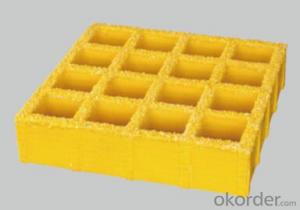When you think of propane tanks, the image that comes to mind is probably a big, heavy, metal cylinder. But times have changed, and so has technology. Fiberglass has stepped in and revolutionized the way we store and use propane. Let’s dive into the world of modern composite propane tanks and explore the role of fiberglass in this transformation.
The Traditional Heavyweights
Before we get into the nitty-gritty of fiberglass, it’s essential to understand the traditional propane tanks. They were made of steel or aluminum, which, while sturdy, had their drawbacks. They were heavy, prone to corrosion, and not the most environmentally friendly option. Plus, they required regular maintenance to ensure safety and longevity.
Enter Fiberglass: A Game Changer
Fiberglass entered the scene and changed the game. It’s lightweight, strong, and resistant to corrosion. This material is a composite, made from woven glass fibers reinforced with a resin. The result is a tank that’s not only easier to handle but also more durable and long-lasting.
Lighter and More Portable
One of the most significant advantages of fiberglass is its lightweight nature. Propane tanks made from this material are much easier to move around, making them ideal for various applications, from residential use to portable camping gear. This portability is a game-changer for many users who need to transport their propane tanks frequently.
Corrosion Resistance: A Major Plus
Corrosion resistance is another significant benefit of fiberglass. Traditional metal tanks are susceptible to rust and corrosion over time, which can lead to leaks and safety hazards. Fiberglass tanks, on the other hand, are immune to these issues, ensuring a safer and more reliable propane storage solution.
Environmentally Friendly
Fiberglass is also an environmentally friendly choice. It’s made from materials that are easier to recycle and have a lower carbon footprint compared to metal. This eco-friendliness is a significant advantage for those who are conscious about their impact on the environment.
Longevity and Durability
The durability of fiberglass tanks is impressive. They can withstand extreme temperatures and weather conditions without losing their structural integrity. This durability means that you won’t have to replace your propane tank as often, saving you money in the long run.
Safety Features
Safety is a top priority when it comes to propane storage. Fiberglass tanks come with built-in safety features that make them even more reliable. They are designed to prevent leaks and have high-impact resistance, reducing the risk of accidents.
Versatility in Design
The versatility of fiberglass allows for a wide range of designs and shapes for propane tanks. This flexibility means that manufacturers can create tanks that cater to specific needs, whether it’s for a small camping stove or a large outdoor grill.
Cost-Effectiveness
While the initial cost of a fiberglass tank might be higher than a traditional metal tank, the long-term benefits make it a cost-effective choice. The reduced need for maintenance, increased durability, and lower environmental impact all contribute to its overall value.
The Future of Propane Storage
As we look to the future, it’s clear that fiberglass is here to stay. Its numerous advantages make it the preferred choice for modern propane storage. From its lightweight and portable nature to its corrosion resistance and environmental benefits, fiberglass is the way forward.
In Conclusion
Fiberglass has truly revolutionized the world of propane tanks. It’s not just about the material itself but the benefits it brings to users. From increased portability and safety to environmental consciousness and cost-effectiveness, fiberglass tanks are the epitome of modern innovation. So, the next time you need a propane tank, consider going for a fiberglass option. You won’t be disappointed.

